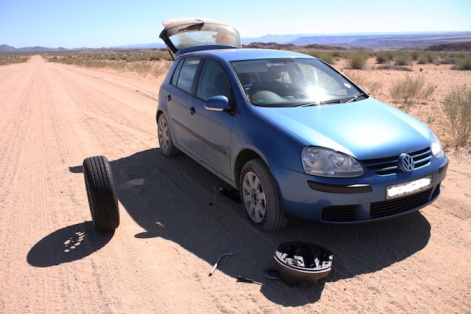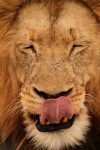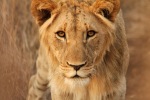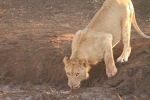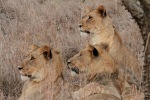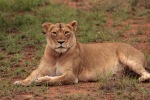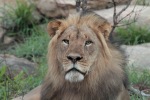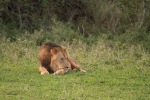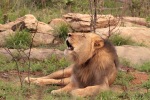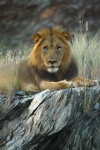
Panthera leo. The king of the jungle. The lion.
The lion is considered by many to be the quintessential animal of Africa, a creature both elegant and dignified, gracing much of the iconography of the continent. To lose the lion is, in many ways, to lose the face of a continent.
Not very long ago, lion populations topped 200,000. Now there are reports that state their numbers are well below 30,000. Sure, 30,000 seems like a big number, right? Now think of this. There are over 7,000,000,000 people in the world. 7,000,000,000. Suddenly 30,000 doesn’t look like such a big number anymore.
Of course, lions don’t only live in Africa. There are lions in Asia as well. But not many. The Asian populations are doing even worse than their African cousins. And while everyone shouts about rhinos and elephants (and by all means, please keep shouting – those animals need as much help as they can get!), the lion is quietly disappearing right under our noses. As with so many other issues with our planet, we are not living up to one of Jane’s life lessons: we are not treasuring our earth. We are failing it and ourselves.
Last month’s debacle over the illegal hunting of #Cecil in #Zimbabwe brought the plight of the lion (and the controversial topic of #trophyhunting) to the forefront. And I’m glad it did, not just because I’m not a fan of trophy hunting, but because I think it’s about time people start talking about what’s going on in Africa, and how it isn’t just Africans but also the rest of the world affecting this amazing continent. It’s about time we realise that as a global community we are not treasuring our earth. And we are collectively letting it down.
I grew up in the US, a child of consumerism and the constant flow of opportunity, excess and – I hate to admit it – ignorance. I was pretty clueless about the ways of the world outside the boundaries of my fine country. Well, let’s be honest, I was pretty clueless about what went on WITHIN my birth country’s boundaries too. But I was always an avid reader, and I did my best to fill my brain with information from National Geographic, newspapers and whatever else I could get my hands on. I did my best to learn, to inform, to debate, to question and to gather nuggets faster than a starving chipmunk in a drought. Then the internet arrived and it was like the heavens opened up and dropped Christmas on me 24-7.
So.Much.Information!!!!
But here’s the rub. The more I knew, the more I wanted to learn. And when it came to conservation, I learned quickly that there was no easy answer when it came to preserving our wildlife and wild places. For whatever reason, we drew a line in the sand: humans on one side, all other species on the other. Hunting was a huge player in that divide.
Sadly (and perhaps ironically), though hunting was a main reason for the decline in many species of wildlife, it was also partly what brought these same species back. In some cases, it was because of hunters that land was set aside for conservation, so they could replenish stocks of animals and then kill them again – I know, odd logic, if you can call it logic at all, but that happened, nonetheless. As a result, conservation and trophy hunting became bedfellows, no matter how strange, contradictory and convoluted it may seem.
People spend a lot of money to hunt wildlife. I don’t agree with it, and to be honest, I find it appalling and neanderthal that in this day and age people still think it’s okay to shoot something for fun. In fact, why it was EVER acceptable blows my mind. But those are my personal sentiments. From a purely economic standpoint, trophy hunting brings in money, even if not a lot of it goes to the areas the industry says it goes to. It is still money that the armchair activists of the world are NOT bringing in.
I want to note that from what I’ve read, it would appear the trophy hunting industry certainly exaggerates how MUCH they are actually contributing to conservation and communities (see article “Economics of Trophy Hunting in Africa are Overrated and Overstated”), so the trophy hunting industry should perhaps stop patting itself so heavily on the back…
Anyway, while tourism of the non-hunting side still brings in significantly more money than trophy hunting (and, again, it is estimated that significantly more of the eco-tourism money actually reaches the local communities and conservation efforts), the two are still partners in crime in the battle to save wildlife. I may not agree with trophy hunting, but at the moment, until something better comes along, it is what it is. Money is king worldwide. If wildlife doesn’t have a price on it, many people don’t care about it. A fact I despise and am always trying to change but acknowledge, nonetheless.
The other thing is that a lot of hunting concessions are on pieces of land that wouldn’t be appropriate for photographic tourism, though they may be fine for wildlife to live on. In some cases hunting concessions provide buffer zones to national parks, which also helps to keep poachers away. Of course, that isn’t to say that poaching doesn’t continue to happen and that there aren’t trophy hunters who are actually guilty of poaching themselves, or of corrupting the system. In fact, that’s more of a reason to turn the spotlight on the industry now, as from what I’ve read, Palmer’s hunt was indeed illegal – it is illegal to lure an animal off a property, and Palmer’s hunting party did not have the proper permits in place to hunt a lion in the first place: all roads point to poaching. And there are documented accounts of people who’ve somehow been allowed to hunt more wildlife than they were legally permitted to hunt. Or where a single hunting permit somehow turned into 14 permits.
However, too often the hunting community immediately goes on the defensive as soon as people get up in arms about trophy hunting, thus obfuscating the reality that the industry needs a clean sweep. There are MANY issues with the hunting industry, and corruption within it, that need to be addressed – issuing illegal permits, hunting where hunting isn’t allowed, using illegal means and methods to hunt, etc. The hunting community also constantly rolls out the tired story that they are the ultimate conservationists, and if it weren’t for them, there wouldn’t be any animals. While that’s not entirely true, it’s not entirely false either. Though, honestly, how can anyone be expected to believe that anyone who hunts animals (particularly critically endangered ones) for sport is truly a conservationist? Sorry, trophy hunters, you’ll never convince me of that. But hey, if they want to keep large swaths of wildlife alive so that they can then shoot a few of them, at least they are putting their money where their mouths are. I am pretty fed up with animal activists and conservation-minded people complaining about the problems and then doing ZERO to change the situation. Posting about it on Facebook is not going to change the world. You have to actively get off your butt to effect change.
But back to trophy hunting. Trophy hunting is about ego, hence the name. Trophy hunters are doing it for a trophy. And even though I hear over and over that trophy hunters only take animals beyond their prime or that are sick/injured beyond repair, we’ve all seen the smug photos posted on the internet. These are not pitiful specimens on their last legs that these hunters are posing next to. They are beautiful specimens. They are creatures at the top of their game. Look at the professional hunting clubs. There are competitions to see who can bag the biggest and the best, not the sickliest and the most malnourished one about to keel over. In the wild, animals kill the weak and the young. Humans kill the strongest and the best. For sport. So let’s stop trying to wrap it up all pretty and pretend trophy hunting is anything but about getting a trophy, and the best one at that.
Whether or not I agree with or like trophy hunting isn’t the point, though. What IS the point is that right now, trophy hunting is one of the ways that reserves (private and otherwise) bring in money. If a reserve has an excess of buffalo (which is not a threatened species and which is regularly consumed, at least in South Africa) and there is a trophy hunter willing to pay huge dollars/pounds/whatevs to hunt that animal, what do you think a reserve should do? If they let the animal just die, they lose out on much-needed revenue (revenue that keeps that reserve in business and, therefore, maintains a home for all the other animals on it). Or they allow a trophy hunter to hunt the animal and thus help defray the outrageous costs of running and maintaining a reserve. A reserve that ensures that wildlife and wild places thrive overall. It’s economics. Not only that, the wildlife needs a home. The reserves are the vehicle keeping many of these populations in existence. What do you do? People seem to expect these reserves and parks to run on good intentions alone. They also seem to think that ALL land in Africa is ideal for eco-tourism and photographic adventures. If only.
The fact is, there are too many people who consume too much and who are habitually encroaching upon wildlife populations in one way or another. People are greedy. We seem to have a global collective entitlement attitude that posits that every other animal on this planet exists for our fun, enjoyment, consumption. We’ve taken it upon ourselves to decimate populations, take away habitat and corral whatever we can round up into reserves. Then we have to ‘manage’ those populations, lest they trample or eat a villager’s crops (or a villager him/herself). Park staff have to shoot animals that have become “problem animals,” or when there are too many to control. We put animals in giant pens and then we regulate their numbers when we run out of room for them. This is how it is. And this is where trophy hunting fits in, for better or for worse.
On another note, I may have an ethical issue with trophy hunting, but I have no issue with hunting for food, provided there is a properly regulated system and the animal is not a threatened species. I eat meat. Not a lot of it, but I do eat it. I wear leather shoes. I am fully aware that the way a lot of wildlife is killed on a reserve is often significantly more humane than the treatment of the pigs, cattle and chickens Americans (and people all over the world) consume on a daily basis. And yet where is the outrage over that? The lion’s life is not more important than the pig’s.
But the death of this lion IS important, as it might be the trigger we need to open up a discussion, change policies and rethink how we see and interact with the other members of the animal kingdom. It might change how we manage land and our own populations.
There is a saying that states “If it pays, it stays,” and I hear people attribute that to animals and wildlife management all too often. But you know what? There are MANY people on this planet who do not ‘pay to stay.’ And we aren’t running around shooting them, are we? No. So why do we think that only wildlife has to pay rent while humans live rent-free, multiplying faster than rabbits, flagrantly wasting resources, destroying land and killing the rest of the animal kingdom for fun? And all of this is done not just at the expense of the rest of the animal kingdom, but often at the expense of other humans as well.
And by the way, what makes us think that wildlife doesn’t ‘pay’? The rest of the animal kingdom did a bang-up job of keeping this world in balance and functioning in tip-top shape. Then humans came along. Now look at it. No other species but our own has caused the extinction of another species. And not just one, but hundreds (maybe more, considering there are probably species we wiped out that we didn’t even know existed in the first place).
Here’s another fact – while there are trophy hunters from countries in Africa, it isn’t Africans who make up a big piece of the trophy hunting pie. It’s Americans. And Russians. And Europeans. And plenty of people from plenty of other countries not found on the continent of Africa. So while people around the world sit in the comfort of their home and type their loathing and outrage for trophy hunters and trophy hunting, their neighbours are out shooting the animals. And sadly it is the people who shout their outrage without knowing the full story that are doing more damage than the people pulling the trigger. Because right now, as stupid as it sounds, African wildlife needs trophy hunting. I wish that weren’t the case, but until people start doing and not just saying, it will remain that way.
Look, I would like nothing better than the end of trophy hunting. However, until we all learn to treasure our earth – start valuing wildlife for wildlife’s sake, start demanding that we put into place efforts (conservation and agricultural and population ones) that don’t kill wildlife (AND then donate a whole lotta money to those efforts) – that ain’t gonna happen. Many people would rather shell out hundreds of dollars for a brand new iPhone every year than donate that money to conservation. Or have smaller families. Or consume less. The sad truth is, many people would rather overconsume at the expense of wildlife than give up their unnecessary materialism. And every year, when they toss out that ‘old’ iPhone or no-longer-in-style pair of $300 jeans, where does their waste end up? In landfills. Which keep expanding. And which take MORE land away from wildlife. Think about that the next time you buy something.
I agree with the airlines who banned the shipment of specific animal trophies. I wish they would extend the ban to the shipment of ALL animals, Big 5 or otherwise (c’mon, guys – the pangolins could use a massive hand!!!). But I don’t agree with the ban because of how I feel about trophy hunting. I agree with it because until we can better police our borders, root out corruption, enforce our laws and effectively prosecute poachers and illegal wildlife syndicates, airlines are just another easy way for these criminals to get their goods out of the country and across borders. If we shut down the shipping of trophies via planes, we help to shut down the transfer of many illegal wildlife products. And THAT is why I am happy about the bans.
I hope that the incident with Cecil is the catalyst necessary to evoke change. I hope it is the driving force that shines a blinding light on corruption within the trophy hunting industry and forces much-needed policy changes and better policing. I hope it shows us that perhaps it’s time we start implementing OTHER ways to raise the much-needed funds to save our wildlife and wild places. I hope it makes people sit up and take notice about how THEIR actions are affecting events on the other side of the world. I hope it is the instigator that propels people into action beyond empty rhetoric.
I want to be optimistic and believe that the tragedy of one lion will open up people’s eyes, start a viable dialogue and usher in much-needed change (and money!). I want to think the world will collectively experience an about-face and we will all finally begin to, as Jane Goodall’s life lesson states, treasure this earth and all of its creatures.
But I have a sinking feeling that in a few weeks people will have forgotten all about Cecil, Walter Palmer, trophy hunting and the issues facing wildlife worldwide. It’s already starting to happen. It’s already getting swept under the rug. And that makes me fear for the future of not just Africa’s iconic species, but of ALL species on this planet.
On another note, I’ve been told that I should get off my soapbox about this stuff, that I shouldn’t say it like it is, and that I should ‘soften’ my approach because that no one wants to feel bad about their actions, even if those actions are wrong. Here’s what I think about that: reality bites (to steal a title from a 1990s film). The truth is the truth, even if we don’t want to hear it (hey, I know I’d often like to hide from it myself). If we all chose to ignore the evil or hush it up, we are the just as complicit in the evil-doing as the people doing the evil. If we continue to soften stuff until it becomes palatable, then we forget the horror of what it is. And then it starts to matter less. And then we start to care less.
People can feel however they want about what I have to say; it’s their choice how they react or whether they choose to read what I write. But whether someone’s going to like the truth or not is not going to keep me from telling it.
My thing is, we can either face reality and deal with it, or we can ignore it and continue to let a lot of bad things happen. The choice of what we decide to do is ours. I’m not okay with sitting back and pretending something doesn’t exist just because that’s the easier thing to do. After all…
All that is necessary for the triumph of evil is that good men do nothing. – Edmund Burke
Or, as the eloquent and brilliant Lucille Ball says:
Not everything that is faced can be changed, but nothing can be changed until it is faced.
So, here’s to our lions, those magnificent creatures that will hopefully roam this earth long after I am gone. I hope I always have the truly special opportunity to shoo them from my doorstep. And here’s to all the other species out there, including the humans. Here’s hoping that we humans finally wake up, rise up and work together to fix the mess we’ve made of our beautiful planet. And that’s today’s #buzzfromthebush
All rights reserved. ©2015 Jennifer Vitanzo
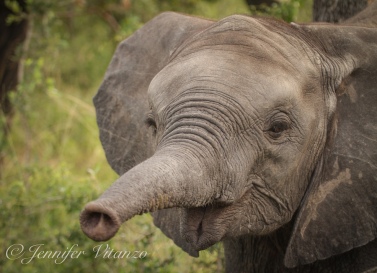
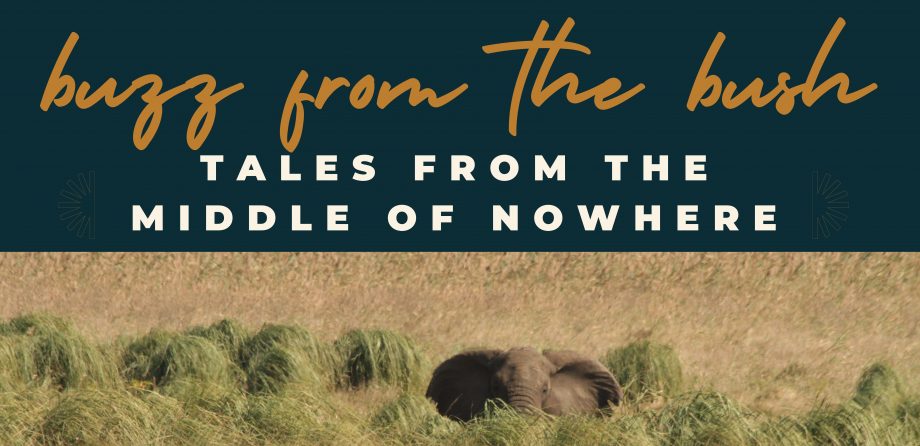









 H
H





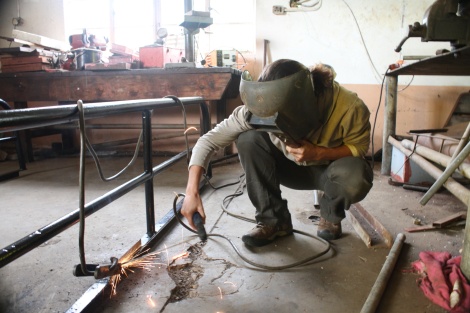
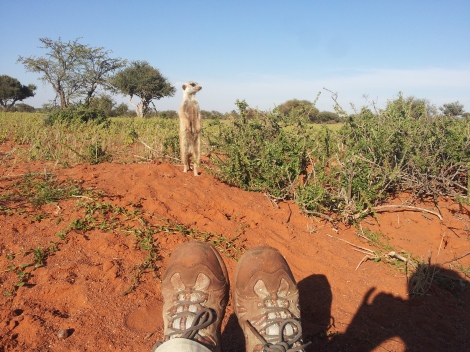 All rights reserved. ©2016 Jennifer Vitanzo
All rights reserved. ©2016 Jennifer Vitanzo












